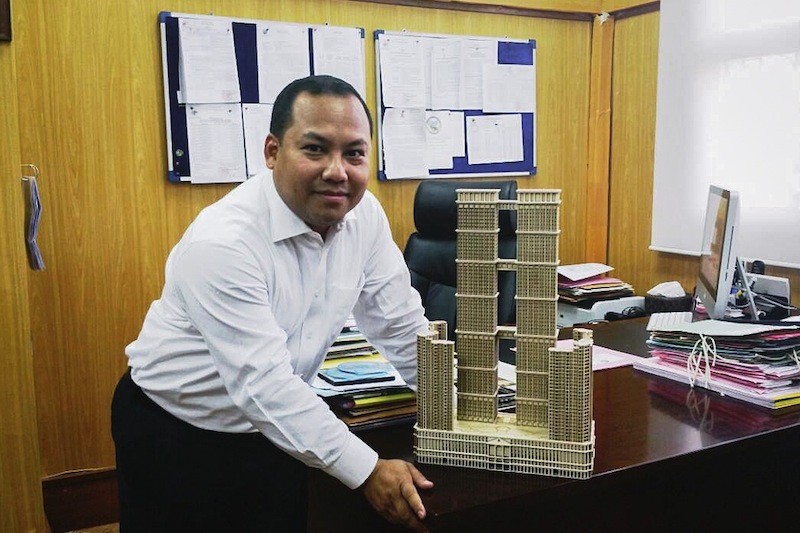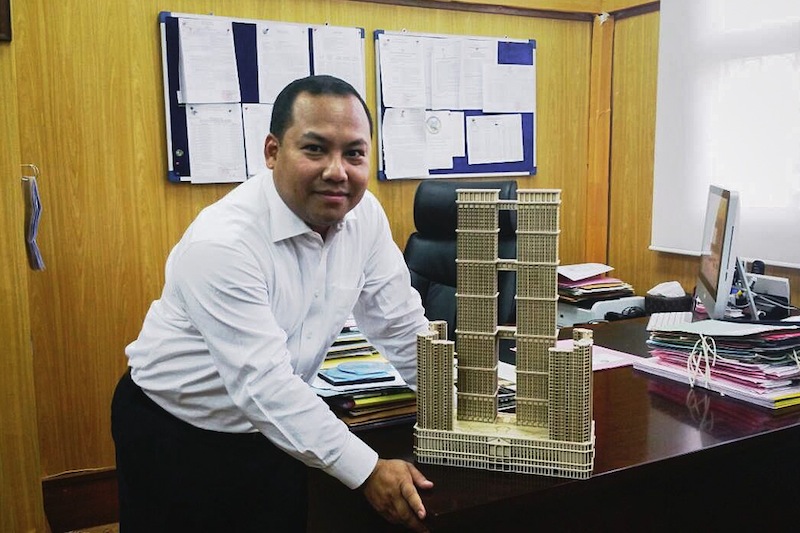The government is reviewing a mammoth $1-billion proposal by the Thai Boon Roong Group to build twin commercial skyscrapers in Phnom Penh which, if constructed, would be among the world’s tallest buildings.
Plans for the 133-story Thai Boon Roong Twin Trade Center, which would be situated on five hectares of prime real estate across from the NagaWorld casino—the current site of Dreamland amusement park—have received initial approval from the municipal land management department, officials said on Wednesday.

Seng Lout, a spokesman for the Ministry of Land Management, said municipal-level officials at the ministry reviewed the company’s permit proposal earlier this month and sent it on to City Hall. But the proposal has yet to reach the ministry’s higher echelons for final appraisal, he said.
“When it arrives at the ministry, it will be reviewed for all aspects, including safety and traffic impacts,” Mr. Lout said. “The proposed project is estimated at $1 billion and the twin towers would include hotels, condominiums and office space.”
The Thai Boon Roong Group, which operates the InterContinental hotel in Phnom Penh, is owned by Teng Bunma, who is alleged to have amassed some of his fortune through involvement in the drug trade, and has a history of brandishing guns during disputes.
Mr. Bunma has faded from public view, however, leaving his business interests in the hands of his sons.
City Hall spokesman Long Dimanche said a technical team was currently reviewing the proposal, although neither he nor officials at the Land Management Ministry would give a time frame for construction, which would be undertaken in cooperation with a Chinese company.
“The company says ‘the sooner, the better,’” Mr. Dimanche said, adding that the municipal government was fully in support of the project, given its potential to boost the city’s economy.
“However, it is important that we study the impacts on traffic and drainage systems before embarking on this so quickly,” he said.
Mr. Dimanche said that over the past decade, 628 “high-rise” buildings—between five and 40 stories tall—had been built in the capital. While the 500-meter Thai Boon Roong Twin Trade Center would easily be the tallest building in Phnom Penh, it is not the largest project ever pitched.
In 2010, Prime Minister Hun Sen unveiled plans for the 555-meter Diamond Tower on Koh Pich island. But construction on the building has yet to begin—despite initially being scheduled for completion next year.
Another major project, Gold Tower 42, led by the South Korean firm Yon Woo Cambodia, has stumbled since it broke ground in 2008. Construction on the 42-story building at the intersection of Monivong and Sihanouk boulevards is now expected to wrap up in 2018.
Ross Wheble, country manager at property consultancy Knight Frank, said the viability of many such mega-projects remained uncertain, as the city’s infrastructure was still catching up with the construction boom.
“While there is a master plan for the city, it really needs to be put in place soon,” Mr. Wheble said. “There is no real public transportation: Roads are narrow and the bus systems need to expand.”
“As for demand, it usually takes awhile for occupancy rates to rise, but there are plenty of foreign investors flowing into the market,” he added.
The Vattanac Capital tower, the country’s tallest building at 188 meters, was completed in 2014 and has an occupancy rate of about 30 percent, the company’s senior leasing manager told The Guardian newspaper in July.
Sung Bonna, chairman of the Bonna Realty Group, a local real estate firm, said that despite low occupancy rates among existing projects, it was too early to assess how popular the twin tower project would be.
“The project would need at least 3 or 4 years to complete,” he said. “So we cannot really assess issues of supply and demand just yet.”
“Because of its attractiveness as a modern office space, it may also compete with small buildings for new companies looking to come to Cambodia.”
(Additional reporting By Tej Parikh)




